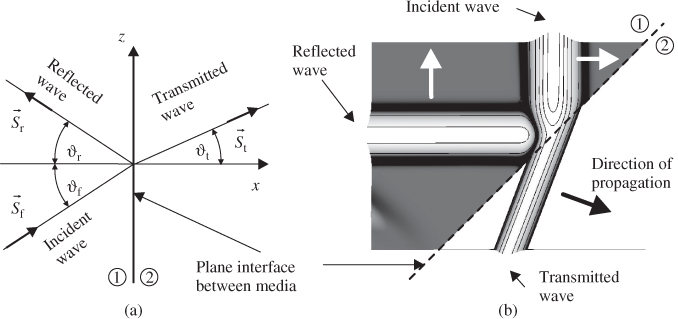8.1 Propagation Mechanisms
8.1.1 Reflection and Refraction
In free space plane waves and spherical waves may propagate. In Section 2.5.3 we looked at reflection and refraction of plane waves interacting with material interfaces. In the following we will summarize the basics and include further physical effects of wave propagation that are important when investigating path loss.
Figure 8.1a shows a plane wave (starting in medium 1) that impinges on a material interface under an angle of ϑf (oblique incidence). There are two physical effects to be observed:
Figure 8.1 Reflection and refraction of a plane wave that impinges on a plane interface of two media.

Figure 8.1b illustrates the situation by looking at a single, positive wavefront at a certain instant in time. The wavefront in medium 1 hits the dielectric material interface at an angle of ϑf = 45°. The relative permittivity of medium ...
Get RF and Microwave Engineering: Fundamentals of Wireless Communications now with the O’Reilly learning platform.
O’Reilly members experience books, live events, courses curated by job role, and more from O’Reilly and nearly 200 top publishers.

